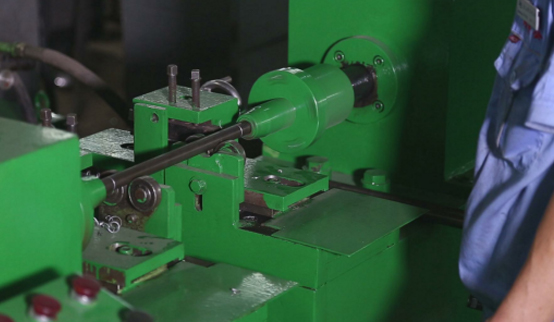 Afrikaans
Afrikaans  Albanian
Albanian  Amharic
Amharic  Arabic
Arabic  Armenian
Armenian  Azerbaijani
Azerbaijani  Basque
Basque  Belarusian
Belarusian  Bengali
Bengali  Bosnian
Bosnian  Bulgarian
Bulgarian  Catalan
Catalan  Cebuano
Cebuano  Corsican
Corsican  Croatian
Croatian  Czech
Czech  Danish
Danish  Dutch
Dutch  English
English  Esperanto
Esperanto  Estonian
Estonian  Finnish
Finnish  French
French  Frisian
Frisian  Galician
Galician  Georgian
Georgian  German
German  Greek
Greek  Gujarati
Gujarati  Haitian Creole
Haitian Creole  hausa
hausa  hawaiian
hawaiian  Hebrew
Hebrew  Hindi
Hindi  Miao
Miao  Hungarian
Hungarian  Icelandic
Icelandic  igbo
igbo  Indonesian
Indonesian  irish
irish  Italian
Italian  Japanese
Japanese  Javanese
Javanese  Kannada
Kannada  kazakh
kazakh  Khmer
Khmer  Rwandese
Rwandese  Korean
Korean  Kurdish
Kurdish  Kyrgyz
Kyrgyz  Lao
Lao  Latin
Latin  Latvian
Latvian  Lithuanian
Lithuanian  Luxembourgish
Luxembourgish  Macedonian
Macedonian  Malgashi
Malgashi  Malay
Malay  Malayalam
Malayalam  Maltese
Maltese  Maori
Maori  Marathi
Marathi  Mongolian
Mongolian  Myanmar
Myanmar  Nepali
Nepali  Norwegian
Norwegian  Norwegian
Norwegian  Occitan
Occitan  Pashto
Pashto  Persian
Persian  Polish
Polish  Portuguese
Portuguese  Punjabi
Punjabi  Romanian
Romanian  Russian
Russian  Samoan
Samoan  Scottish Gaelic
Scottish Gaelic  Serbian
Serbian  Sesotho
Sesotho  Shona
Shona  Sindhi
Sindhi  Sinhala
Sinhala  Slovak
Slovak  Slovenian
Slovenian  Somali
Somali  Spanish
Spanish  Sundanese
Sundanese  Swahili
Swahili  Swedish
Swedish  Tagalog
Tagalog  Tajik
Tajik  Tamil
Tamil  Tatar
Tatar  Telugu
Telugu  Thai
Thai  Turkish
Turkish  Turkmen
Turkmen  Ukrainian
Ukrainian  Urdu
Urdu  Uighur
Uighur  Uzbek
Uzbek  Vietnamese
Vietnamese  Welsh
Welsh  Bantu
Bantu  Yiddish
Yiddish  Yoruba
Yoruba  Zulu
Zulu Exploring Different Types of Lagging for Effective Pulley Systems in Various Applications
Types of Pulley Lagging A Comprehensive Overview
Pulley lagging is an essential component in conveyor system design, particularly in industries where material handling is a critical function. It serves to enhance the grip between the pulley and the belt, which can significantly improve the efficiency and lifespan of both. This article explores the various types of pulley lagging and their advantages, enabling better decision-making for engineers and operations managers.
1. Rubber Lagging
Rubber lagging is the most common type of pulley lagging used in many industrial applications. It generally offers excellent traction and durability, making it suitable for high-tension environments. While there are different grades of rubber, including wear-resistant and heat-resistant variants, rubber lagging can often face challenges in harsh conditions, such as extreme temperatures or chemical exposures. However, its resilience and compatibility with most belt types make it a popular choice.
For applications that involve heavy material handling and increased wear, ceramic lagging is a preferred option. This type of lagging is embedded with ceramic tiles, providing exceptional wear resistance and increasing the life of the pulley. Ceramic lagging is particularly beneficial in environments where the conveyor belt frequently encounters abrasive materials. Despite its higher costs, the extended lifespan and reduced maintenance requirements make it a worthwhile investment for certain operations.
3. Steel Lagging
types of pulley lagging

Steel lagging provides an alternative to rubber and ceramic options. This type of lagging consists of steel plates and is primarily used in applications requiring high levels of traction and strength. While it is not as common as other types due to its higher weight and potential for causing wear on the conveyor belt, steel lagging can perform exceptionally well in heavy-load situations. It is often utilized in mining and heavy-duty sectors where robust solutions are necessary.
4. Polyurethane Lagging
Polyurethane lagging is gaining popularity due to its mix of durability and flexibility. This material offers excellent resistance to wear, chemicals, and UV degradation, making it suitable for various applications. Additionally, it provides a softer surface compared to steel lagging, which can help reduce belt wear. While it may not provide as much grip as rubber lagging, its overall performance in harsher environments has made it an appealing choice in modern conveyor systems.
5. Grooved Lagging
Grooved rubber lagging or grooved ceramic lagging is specifically designed with grooves that enhance the grip between the pulley and the conveyor belt. This type of lagging can prevent slippage and improve efficiency in material transfer. Grooved lagging is particularly effective in inclined installations where the risk of belt slip is heightened. The design of the grooves can vary depending on the application, allowing for customization based on operational needs.
Conclusion
Selecting the right type of pulley lagging is crucial for optimizing the performance of any conveyor system. Whether it's rubber, ceramic, steel, or polyurethane, each material has unique properties tailored to specific industrial demands. By understanding the advantages and limitations of these lagging types, companies can enhance operational efficiency, reduce downtime, and extend the lifespan of their conveyor systems. As technology evolves, it is expected that newer materials and innovative solutions will continue to emerge, further improving the performance of pulley systems across diverse industries.
-
Revolutionizing Conveyor Reliability with Advanced Rubber Lagging PulleysNewsJul.22,2025
-
Powering Precision and Durability with Expert Manufacturers of Conveyor ComponentsNewsJul.22,2025
-
Optimizing Conveyor Systems with Advanced Conveyor AccessoriesNewsJul.22,2025
-
Maximize Conveyor Efficiency with Quality Conveyor Idler PulleysNewsJul.22,2025
-
Future-Proof Your Conveyor System with High-Performance Polyurethane RollerNewsJul.22,2025
-
Driving Efficiency Forward with Quality Idlers and RollersNewsJul.22,2025





























